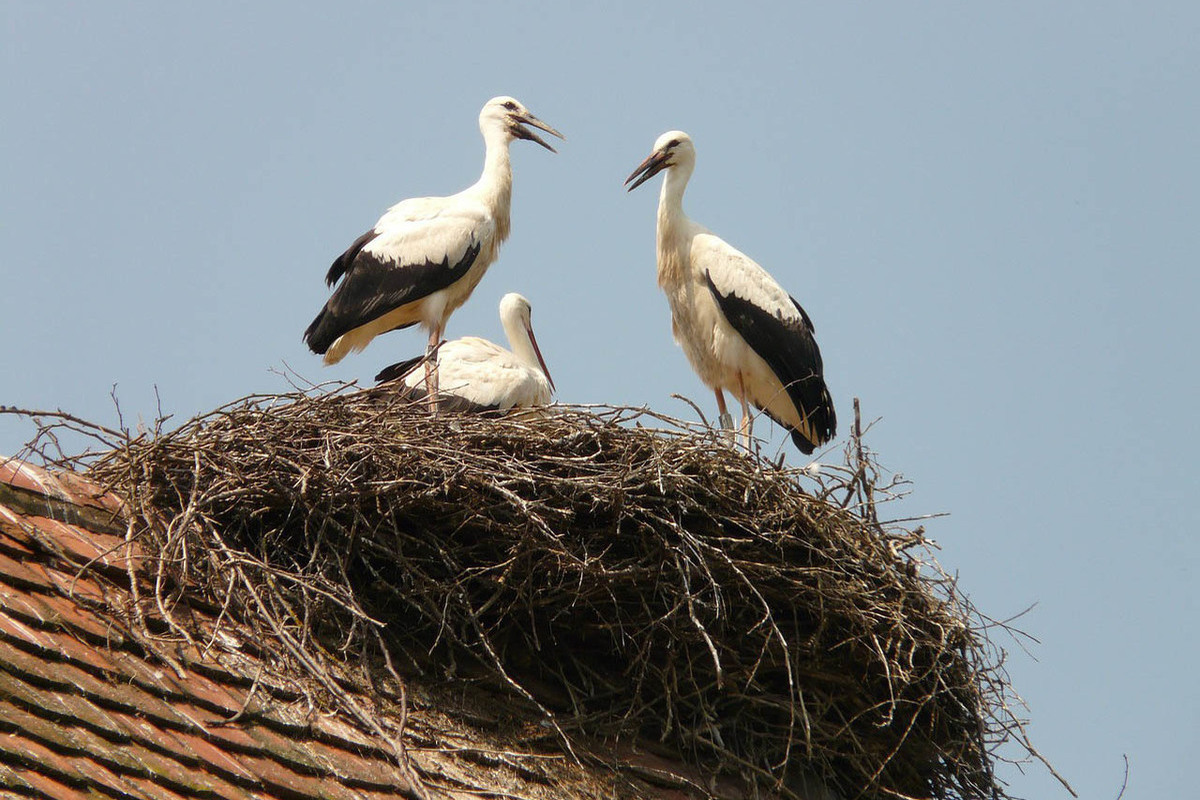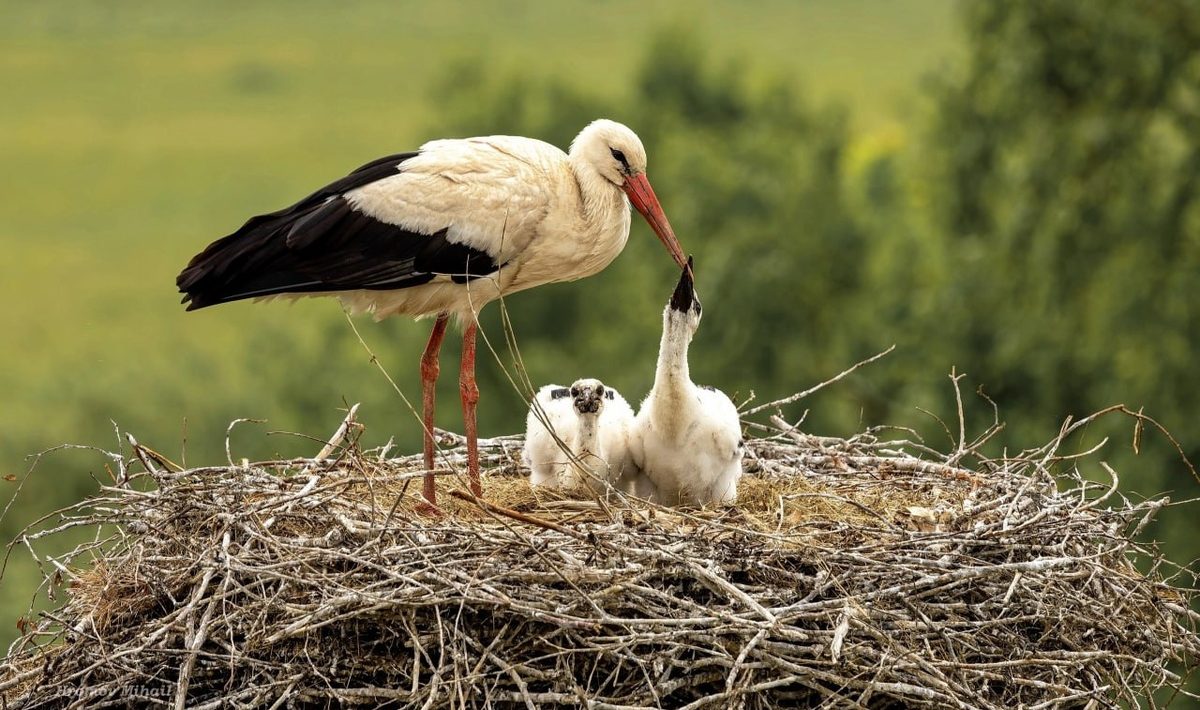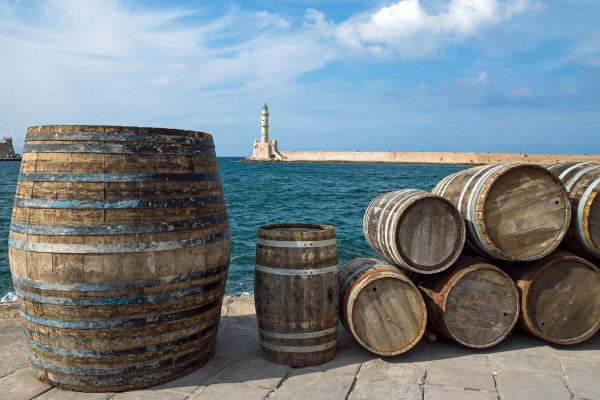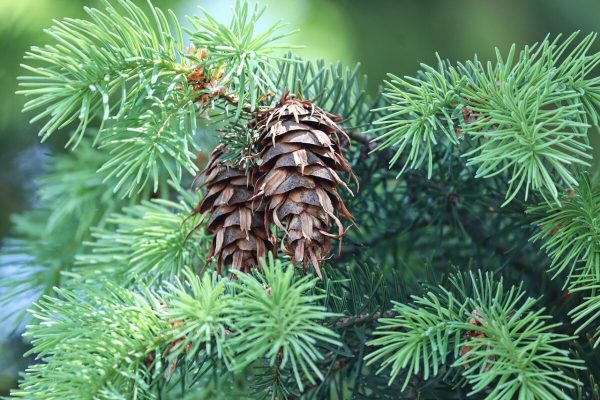In popular imagery, the stork (a bird belonging to the genus Ciconia) is the bird that brings babies to homes.
If, beyond fairy tales, you are interested in storks, do you know what their young are called? In this article, we take advantage of this question to introduce you to the world of this instantly recognisable animal.
The name of the baby stork
The baby stork is a chick that has its own name: it is called a cigogneau. The term is part of a long list of names for young animals that end in ‘eau’. These include the cailleteau, young of the quail, the dindonneau, young of the turkey, the faisandeau or faisanneau, young of the pheasant, the pigeonneau, young of the pigeon, etc.
A spectacular birth
There are several species of storks, but the white stork (Ciconia ciconia) is a large wading bird recognisable by its black and white plumage and red beak. When it is time to breed, they build huge nests that can reach more than two metres in diameter. If they are not destroyed, they can reuse them from one year to the next, sometimes for several decades.
The female usually lays four eggs. Although the incubation period lasts 30 to 32 days, the eggs hatch asynchronously and the length of stay in the nest varies from 54 to 68 days.
The first days of a stork chick
At birth, a stork chick weighs around 70 grams, while an adult can weigh over 4 kilograms. Its eyes are closed and it huddles close to its siblings in the nest. The parents keep a constant watch: one stays in the nest while the other goes off to find food. The chicks are unable to feed or protect themselves, even though they have beaks.
Their legs are black. The chick is born with grey down, which it keeps for a week. A second layer of down, this time white, replaces it. After about twenty days, black feathers appear at the tips of the wings: these are the flight feathers. The beak is dark grey at first, then lightens before turning bright red in adulthood.
When do stork chicks fly?
At one month old, they begin to flap their wings from time to time while remaining in the nest. At 45 days, their feathers are well developed and repeated wing beats allow the stork chicks to rise higher into the air, although they remain above the nest as a precaution.
They practise even when the adults are not there to teach them to fly. They do this instinctively to gradually develop their muscles.
What do young storks eat?
Stork chicks are fed by their parents. When they are very young, their parents bring them earthworms and insects, which they regurgitate onto the bottom of the nest. When they are older, they can reach their parents’ beaks to get their food. As for water, it is poured directly from the adults’ beaks into the young ones’ beaks. This method can create competition between siblings. It is common among birds, and not just storks, for the strongest to feed more, creating an imbalance that can be fatal for the youngest.
Rapid growth
Stork chicks grow very quickly. They reach 3 to 4 kg in just two and a half months. This is necessary because they migrate from the end of August.
They take their first flight between 10 and 12 weeks of age. Despite this ability, they will continue to return to the nest for a few days to be fed.
Dangers facing stork chicks
Falling from the nest before they can fly remains a constant threat to stork chicks. For those that do not fall, their first attempts at flight are also dangerous. In addition, predators such as eagles and other large birds of prey may attack eggs or young when their parents are away for too long. Of course, weather conditions must also be taken into account: heavy rain or heat waves can cause the death of some chicks.

Stork chicks and migration
Traditionally, storks spend the winter in Africa. During migration, they only fly during the day, landing in the evening to rest and look for food. They choose a safe place, such as a shallow pond or a tree. In the morning, they eat a little and then continue on their way. Most white storks reach their wintering grounds between September and October. In March, they begin their return journey.
However, observers have noticed that more and more of them are settling down in France. Storks are not actually afraid of the cold, but of hunger. Beetles and orthoptera become scarcer when the ground is frozen, but with rubbish dumps, these birds can ultimately find food all year round. The young still migrate, however, out of instinct, showing that they do not need their parents. But they are travelling less and less far. Very few young storks reach Africa. They stop in the south of France or Spain.
Storks in culture and legends
It is because of these migrations that storks are associated with the arrival of babies in many European legends: their return in spring coincided with a period of births among humans. Furthermore, the arrival of a pair of storks on a house has long been considered a sign of prosperity and fertility.
Storks today
In the 1960s and 1970s, the white stork came close to extinction in France. This decline was due to high mortality rates caused by droughts in the Sahel, hunting in African wintering areas (particularly in Mali) and accidents on power lines.
Faced with this critical situation, conservation measures were put in place: birds were reintroduced using the enclosure method in Alsace and artificial nesting platforms were created in Charente-Maritime. These efforts, led by the LPO and various ornithological groups, have enabled the gradual recolonisation of the Atlantic coast and an increase in the number of breeding pairs. Nevertheless, populations remain fragile and we must remain mobilised to ensure the future of the species.





